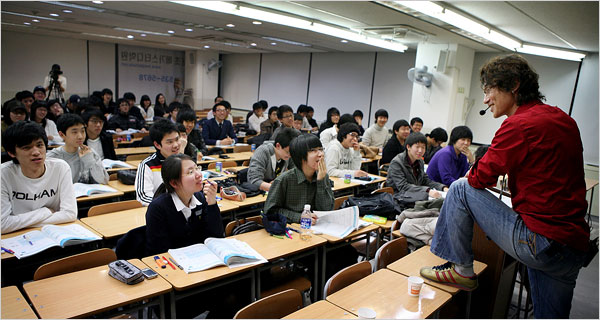
In the past two weeks, I noticed the New York Times reporting on college entrance exam preparation in South Korea and in China. The U.S. media often covers how stressful and college entrance exams are in Asia, but rarely do I come across how other region’s higher educational systems admit their students, let alone the academic pressures faced by those students.
Unlike in the United States, “applying” to college in South Korea, China — or for that matter, a lot of other Asian countries like Japan and India — is fairly simple and straight forward: you take one exam, and how well you did on that one exam, will determine which college you can attend (and sometimes which major you can major in):
“In this country, where people’s status and income at 60 are largely determined by which college they entered at 18, South Korean parents’ all-consuming task is to ensure that their children enter an elite university. And that requires a high score on the college entrance exam.”
…
“The Chinese test is in some ways like the American SAT, except that it lasts more than twice as long. The nine-hour test is offered just once a year and is the sole determinant for admission to virtually all Chinese colleges and universities. About three in five students make the cut.”
There are no other factors; no high school grades, no teacher recommendations, no athletic abilities or extracurricular activities which determine whether or not you get into college. And in those countries, which college or university you attend can have a HUGE influence on the rest of your life, setting a path for someone to be a future president or prime minister or future business leader in that country.
In many ways, I admire the simplicity of these examination systems, and in other ways despise them; whether or not these college entrance exams are accurate ways to measure the ability of a high school to succeed in college (or in life, for that matter) may be questionable, I’ve always thought that there was something very orderly, transparent and meritocratic about the process.
Growing up, it has always bothered me that factors such as whether or not a student was the child of an alumnus (the worst unspoken affirmative action program in the United States, if you ask me) or if someone excelled at a sport nothing to do with whether or not they were deserving of attending an academic institution they would have had no chance of getting into. If Asian American immigrant parents realized how important some of these non-academic factors — especially athletics — can play in college admissions, many Asian parents wouldn’t be so singularly focused on academics and draw concern.
However, I do think it is ridiculous to put so much pressure and expectations on a high school student in Asia on one exam that will essentially determine the future of that student into late adulthood. Add to that the fact that Asian educational systems depend on rote memorization, whereas the American system fosters the sense in students to pursue their interests, passions, and an important differentiator, creativity. Memorizing and studying, just for the sake of an entrance exam, to get into the right college seems like a complete waste of time and effort for any society. Singapore has come to realize its educational system’s failures, most notably in the area of creative thinking, which it considers absolutely necessary to compete in the future.
The great irony of the Asian systems is that even as graduate studies improve in Asian countries, the predominate preferred choice for Asians are to still to pursue graduate studies in the United States.
Of course, the American educational system is far from perfect, but it seems that the American media seems to exotify the Asian test taking process a bit too much; I’d much rather read a more balanced approach as to what are the strengths and weaknesses of the educational systems in the United States versus Asia, as well as other parts of the world.
(Image Source: The New York Times)








